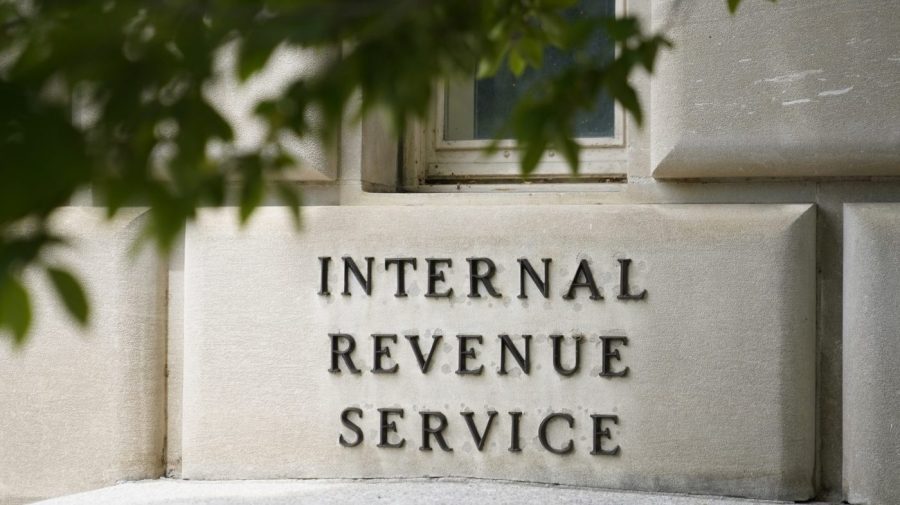Business
IRS gears up to go after ‘complex partnerships’ despite lack of clear definition on July 31, 2023 at 9:30 am Business News | The Hill

The IRS is getting ready to go after what it calls “large, complex partnerships” as part of its push to pursue wealthy tax cheats with tens of billions of dollars in additional funding.
The IRS plans to double audit coverage for partnerships with $10 million or more in assets by fiscal year 2025 over fiscal 2021 levels.
Here’s how the IRS will spend its $80 billion funding boost
But new research from the government’s internal watchdog finds that the specific types of legal and commercial structures the IRS is targeting need to be more clearly defined in order to recoup the uncollected funds.
“IRS has not defined or developed guidance on what a large, complex partnership is or developed measures to ensure additional audits focus on such partnerships,” the Government Accountability Office (GAO) wrote in a report released Thursday.
Pinning down partnerships
Partnerships don’t pay taxes directly but pass their tax liability onto their owners through an IRS form K-1. They can be nested within other partnerships in networked or circular structures so complex they can resemble a tangle of spiderwebs or pieces of Byzantine jewelry.
This makes it difficult to audit them, as evidenced by atrophying audit rates.
Here’s what a free IRS e-filing tax return system could look like
“The lack of a definition presents a challenge as IRS seeks to increase its audit coverage of partnerships,” the report read.
In a response to the criticism, the IRS acknowledged the haziness in the definition and said it’s working to be more precise.
“We plan to perform additional research and analysis to better understand the characteristics and define partnership segments,” Douglas O’Donnell, the deputy commissioner for services and enforcement at the IRS, wrote in a letter to the GAO earlier this month.
Current IRS Commissioner Danny Werfel said earlier this month on a call with reporters that the public should expect more updates on how exactly the IRS is going after big partnerships soon.
“We’re … focused on increasing our exam coverage for complex partnerships,” Werfel said. “In our upcoming next briefing we’ll provide more details on that.”
“I’m looking forward to future updates,” he said.
Partnership boom expands the tax gap
The GAO analysis found that only 54 large partnerships out of more than 20,000 got audited in 2019, for a rate of 0.3 percent.
That is just a hair shy of the audit rate for people who make $25,000 a year or less. In 2007, the audit rate for large partnerships was more than quadruple that.
Tax gap rises as IRS finds amount of unpaid taxes is increasing
Partnerships have also exploded in recent years as a commercial designation within the economy.
In 2002, there were about 3,000 partnerships worth more than $100 million in the U.S. In 2019, there were more than six times that amount.
The number of partnerships worth between $1 billion and $5 billion dollars has increased more than tenfold during that period, and the number of partnerships worth more than $5 billion has increased more than eightfold.
Unreported business income on individual income tax — precisely the type of income that pass-through entities like partnerships allow — is one of the largest segments of the “tax gap,” the amount the government is owed in taxes each year but fails to collect.
The IRS estimated the tax gap for personal business income to be $130 billion annually for tax years 2014 to 2016, which was the last time the tax gap was formally measured, but it is likely much higher than that now.
The gross tax gap was about $500 billion in those years, but last year former IRS commissioner Charles Rettig said it could be as much as $1 trillion.
A two-tiered tax system
Tax experts have long looked askance at partnerships as a potential tax dodge.
“The IRS does not treat K-1 income the same way that it does reports of people’s wages filed on W-2 forms or the reports of income from dividends, interest, royalties and contract jobs reported on Form 1099,” veteran tax reporter David Cay Johnston wrote in a 2003 book on the U.S. tax system.
Black Americans likely audited at higher rates, IRS says
“IRS computers match every wage, dividend, interest, royalty and contract job report to what is listed on individual tax returns to make sure that every dollar earned in these ways is taxed. Not so partnership and K-1 reports,” he wrote.
The differential administrative treatment of partnership income is symptomatic of what Treasury Secretary Janet Yellen has described as the “two-tiered tax system” in the U.S.
“At the core of the problem is a discrepancy in the ways types of income are reported to the IRS: opaque income sources frequently avoid scrutiny while wages and federal benefits are typically subject to nearly full compliance,” she said in a 2021 statement on Congressional tax proposals.
Business The IRS is getting ready to go after what it calls “large, complex partnerships” as part of its push to pursue wealthy tax cheats with tens of billions of dollars in additional funding. The IRS plans to double audit coverage for partnerships with $10 million or more in assets by fiscal year 2025 over fiscal…
Business
Harvard Grads Jobless? How AI & Ghost Jobs Broke Hiring

America’s job market is facing an unprecedented crisis—and nowhere is this more painfully obvious than at Harvard, the world’s gold standard for elite education. A stunning 25% of Harvard’s MBA class of 2025 remains unemployed months after graduation, the highest rate recorded in university history. The Ivy League dream has become a harsh wakeup call, and it’s sending shockwaves across the professional landscape.

Jobless at the Top: Why Graduates Can’t Find Work
For decades, a Harvard diploma was considered a golden ticket. Now, graduates send out hundreds of résumés, often from their parents’ homes, only to get ghosted or auto-rejected by machines. Only 30% of all 2025 graduates nationally have found full-time work in their field, and nearly half feel unprepared for the workforce. “Go to college, get a good job“—that promise is slipping away, even for the smartest and most driven.
Tech’s Iron Grip: ATS and AI Gatekeepers
Applicant tracking systems (ATS) and AI algorithms have become ruthless gatekeepers. If a résumé doesn’t perfectly match the keywords or formatting demanded by the bots, it never reaches human eyes. The age of human connection is gone—now, you’re just a data point to be sorted and discarded.
AI screening has gone beyond basic qualifications. New tools “read” for inferred personality and tone, rejecting candidates for reasons they never see. Worse, up to half of online job listings may be fake—created simply to collect résumés, pad company metrics, or fulfill compliance without ever intending to fill the role.
The Experience Trap: Entry-Level Jobs Require Years
It’s not just Harvard grads who are hurting. Entry-level roles demand years of experience, unpaid internships, and portfolios that resemble a seasoned professional, not a fresh graduate. A bachelor’s degree, once the key to entry, is now just the price of admission. Overqualified candidates compete for underpaid jobs, often just to survive.
One Harvard MBA described applying to 1,000 jobs with no results. Companies, inundated by applications, are now so selective that only those who precisely “game the system” have a shot. This has fundamentally flipped the hiring pyramid: enormous demand for experience, shrinking chances for new entrants, and a brutal gauntlet for anyone not perfectly groomed by internships and coaching.
Burnout Before Day One
The cost is more than financial—mental health and optimism are collapsing among the newest generation of workers. Many come out of elite programs and immediately end up in jobs that don’t require degrees, or take positions far below their qualifications just to pay the bills. There’s a sense of burnout before careers even begin, trapping talent in a cycle of exhaustion, frustration, and disillusionment.
Cultural Collapse: From Relationships to Algorithms
What’s really broken? The culture of hiring itself. Companies have traded trust, mentorship, and relationships for metrics, optimizations, and cost-cutting. Managers no longer hire on potential—they rely on machines, rankings, and personality tests that filter out individuality and reward those who play the algorithmic game best.
AI has automated the very entry-level work that used to build careers—research, drafting, and analysis—and erased the first rung of the professional ladder for thousands of new graduates. The result is a workforce filled with people who know how to pass tests, not necessarily solve problems or drive innovation.
The Ghost Job Phenomenon
Up to half of all listings for entry-level jobs may be “ghost jobs”—positions posted online for optics, compliance, or future needs, but never intended for real hiring. This means millions of job seekers spend hours on applications destined for digital purgatory, further fueling exhaustion and cynicism.
Not Lazy—Just Locked Out
Despite the headlines, the new class of unemployed graduates is not lazy or entitled—they are overqualified, underleveraged, and battered by a broken process. Harvard’s brand means less to AI and ATS systems than the right keyword or résumé format. Human judgment has been sidelined; individuality is filtered out.

What’s Next? Back to Human Connection
Unless companies rediscover the value of human potential, mentorship, and relationships, the job search will remain a brutal numbers game—one that even the “best and brightest” struggle to win. The current system doesn’t just hurt workers—it holds companies back from hiring bold, creative talent who don’t fit perfect digital boxes.
Key Facts:
- 25% of Harvard MBAs unemployed, highest on record
- Only 30% of 2025 grads nationwide have jobs in their field
- Nearly half of grads feel unprepared for real work
- Up to 50% of entry-level listings are “ghost jobs”
- AI and ATS have replaced human judgment at most companies
If you’ve felt this struggle—or see it happening around you—share your story in the comments. And make sure to subscribe for more deep dives on the reality of today’s economy and job market.
This is not just a Harvard problem. It’s a sign that America’s job engine is running on empty, and it’s time to reboot—before another generation is locked out.
Business
Why 9 Million Americans Have Left

The Growing American Exodus
Nearly 9 million Americans now live outside the United States—a number that rivals the population of several states and signals a profound shift in how people view the American dream. This mass migration isn’t confined to retirees or the wealthy. Thanks to remote work, digital nomad visas, and mounting pressures at home, young professionals, families, and business owners are increasingly joining the ranks of expats.

Rising Costs and Shrinking Wallets
Living in the US has become increasingly expensive. Weekly grocery bills topping $300 are not uncommon, and everyday items like coffee and beef have surged in price over the last year. Rent, utilities, and other essentials also continue to climb, leaving many Americans to cut meals or put off purchases just to make ends meet. In contrast, life in countries like Mexico or Costa Rica often costs just 50–60% of what it does in the US—without sacrificing comfort or quality.
Health Care Concerns Drive Migration
America’s health care system is a major trigger for relocation. Despite the fact that the US spends more per person on health care than any other country, millions struggle to access affordable treatment. Over half of Americans admit to delaying medical care due to cost, with households earning below $40,000 seeing this rate jump to 63%. Many expats point to countries such as Spain or Thailand, where health care is both affordable and accessible, as a major draw.

Seeking Safety Abroad
Public safety issues—especially violent crime and gun-related incidents—have made many Americans feel unsafe, even in their own communities. The 2024 Global Peace Index documents a decline in North America’s safety ratings, while families in major cities often prioritize teaching their children to avoid gun violence over simple street safety. In many overseas destinations, newly arrived American families report a significant improvement in their sense of security and peace of mind.
Tax Burdens and Bureaucracy
US tax laws extend abroad, requiring expats to file annual returns and comply with complicated rules through acts such as FATCA. For some, the burden of global tax compliance is so great that thousands relinquish their US citizenship each year simply to escape the paperwork and scrutiny.
The Digital Nomad Revolution
Remote work has unlocked new pathways for Americans. Over a quarter of all paid workdays in the US are now fully remote, and more than 40 countries offer digital nomad visas for foreign professionals. Many Americans are leveraging this opportunity to maintain their US incomes while cutting costs and upgrading their quality of life abroad.

Conclusion: Redefining the Dream
The mass departure of nearly 9 million Americans reveals deep cracks in what was once considered the land of opportunity. Escalating costs, inaccessible healthcare, safety concerns, and relentless bureaucracy have spurred a global search for better options. For millions, the modern American dream is no longer tied to a white-picket fence, but found in newfound freedom beyond America’s borders.
Business
Will Theaters Crush Streaming in Hollywood’s Next Act?

Hollywood is bracing for a pivotal comeback, and for movie lovers, it’s the kind of shake-up that could redefine the very culture of cinema. With the freshly merged Paramount-Skydance shaking up its strategy, CEO David Ellison’s announcement doesn’t just signal a change—it reignites the passion for moviegoing that built the magic of Hollywood in the first place.

Theatrical Experience Roars Back
Fans and insiders alike have felt the itch for more event movies. For years, streaming promised endless options, but fragmented attention left many longing for communal spectacle. Now, with Paramount-Skydance tripling its film output for the big screen, it’s clear: studio leaders believe there’s no substitute for the lights, the hush before the opening credits, and the collective thrill of reacting to Hollywood’s latest blockbusters. Ellison’s pivot away from streaming exclusives taps deep into what unites cinephiles—the lived experience of cinema as art and event, not just content.
Industry Pulse: From Crisis to Renaissance
On the financial front, the numbers are as electrifying as any plot twist. After years of doubt, the box office is roaring. AMC, the world’s largest theater chain, reports a staggering 26% spike in moviegoer attendance and 36% revenue growth in Q2 2025. That kind of momentum hasn’t been seen since the heyday of summer tentpoles—and it’s not just about more tickets sold. AMC’s strategy—premium screens, with IMAX and Dolby Cinema, curated concessions, and branded collectibles—has turned every new release into an event, driving per-customer profits up nearly 50% compared to pre-pandemic norms.
Blockbusters Lead the Culture
Forget the gloom of endless streaming drops; when films like Top Gun: Maverick, Mission: Impossible, Minecraft, and surprise hits like Weapons and Freakier Friday draw crowds, the industry—and movie fans—sit up and take notice. Movie-themed collectibles and concession innovations, from Barbie’s iconic pink car popcorn holders to anniversary tie-ins, have made each screening a moment worth remembering, blending nostalgia and discovery. The focus: high-impact, shared audience experiences that streaming can’t replicate.
Streaming’s Limits and Studio Strategy
Yes, streaming is still surging, but the tide may be turning. The biggest franchises, and the biggest cultural events, happen when audiences come together for a theatrical release. Paramount-Skydance’s shift signals to rivals that premium storytelling and box office spectacle are again at the center of Hollywood value creation. The result is not just higher profits for exhibitors like AMC, but a rebirth of movie-going as the ultimate destination for fans hungry for connection and cinematic adventure.

Future Forecast: Culture, Community, and Blockbuster Dreams
As PwC and others warn that box office totals may take years to fully catch up, movie lovers and industry leaders alike are betting that exclusive theatrical runs, enhanced viewing experiences, and fan-driven engagement are the ingredients for long-term recovery—and a new golden age. The Paramount-Skydance play is more than a business move; it’s a rallying cry for the art of the theatrical event. Expect more big bets, more surprises, and—finally—a long-overdue renaissance for the silver screen.
For those who believe in the power of cinema, it’s a thrilling second act—and the best seat in the house might be front and center once again.

 Entertainment2 weeks ago
Entertainment2 weeks agoAfter Party: Festival Winner for Best Romantic Short

 News2 weeks ago
News2 weeks agoCamp Wackapoo – Rise of Glog Takes Center Stage

 Entertainment2 weeks ago
Entertainment2 weeks agoFrancisco Ramos Takes Top Mockumentary Award at Houston Comedy Film Festival

 Politics3 weeks ago
Politics3 weeks agoMamdani’s Victory Triggers Nationwide Concern Over New York’s Future

 Politics3 weeks ago
Politics3 weeks agoTrump’s $2,000 Tariff Dividend Plan: Who Gets Paid?

 News2 weeks ago
News2 weeks ago50-Year Mortgages: A Game Changer or a Debt Trap?

 Film Production2 weeks ago
Film Production2 weeks agoWhy China’s 2-Minute Micro Dramas Are Poised To Take Over The U.S.

 News7 days ago
News7 days agoEpstein Files to Be Declassified After Trump Order






























